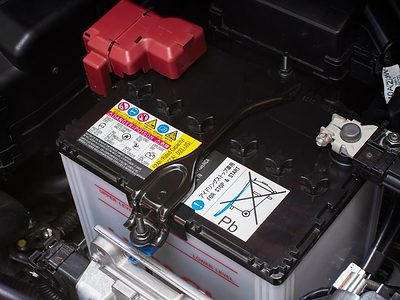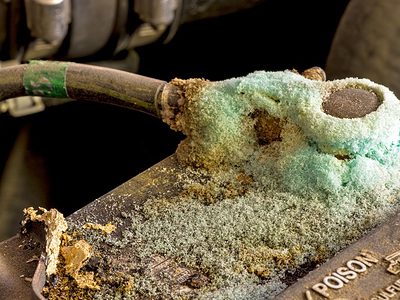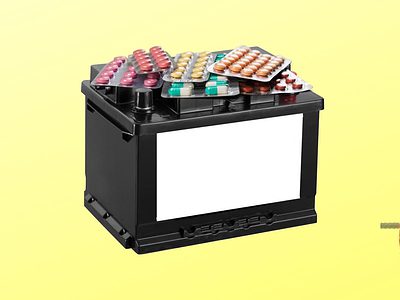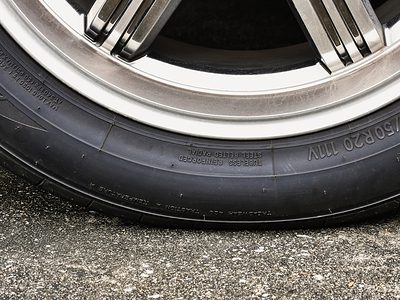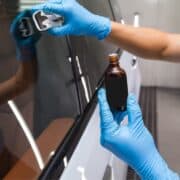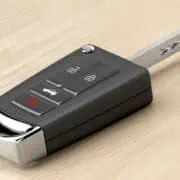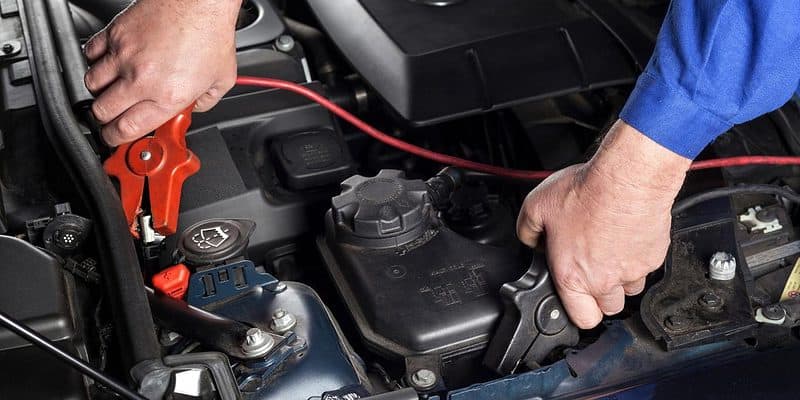
Imagine waking up early, going about your usual morning activities, and getting ready to leave for work.
You jump into the driver’s seat of your car, pick up your key, and turn the ignition.
But instead of the familiar sound of your engine roaring to life, you hear some sputters. Turning the key a second time does nothing, the same as the third.
It’s clear what has happened—your battery is dead! You’re now faced with a potentially ruined day taking an unplanned bus trip to work.
But that doesn’t have to be the case.
With the right pieces of equipment and the necessary bits of knowledge, you can quickly brush off this setback and go around your daily business like nothing happened.
This article will teach you how to jump a car so you’re never left stranded with a dead car battery.
What You Need to Know About Batteries to Jumpstart a Car
Car batteries have terminals, which are protruding metal parts at the top. They serve as the connection point between the battery and the car’s electrical system. They are attached to the positive and negative straps of the end cells within the battery and are labeled accordingly.
Jumpstarting requires you to connect the clamps of your cable to the corresponding terminal—positive to positive and negative to negative. Identifying the terminals is usually straightforward. The positive (+) terminal is marked with a red color and a plus sign around the base, while the negative terminal is marked with black with a minus sign at the base.
What Do You Need to Jumpstart a Car?
To jump your car, you would need the following:
- Jumper Cables: The longer the cables, the better for easy reachability.
- Mechanic Gloves: If you only possess disposable gloves, that’s okay. But heavy-duty options give offer more cushion. That said, you can still proceed without gloves, as a 12V battery is unlikely to shock you. A higher voltage would be pretty dangerous, though.
- Paper Coveralls: Not necessary. Just good to have if you don’t want any chance of staining your clothes.
- Owner’s Manual: Often in the glove box of your car. While you won’t need it for the jumping proper, you should go through it at your leisure for any manufacturer specifics about jumping.

How to Jumpstart a Car With Another Vehicle
To jumpstart your car with another vehicle, you would need the help of someone kind enough to lend a helping hand (or car, in this case). It goes without saying that you should use safe judgment when seeking assistance from people you don’t know.
You could also call a loved one who stays or works around the area for help or inform them of your whereabouts if you’re far away.
Warning
1. While it’s fine in most cases, go through your owner’s manual beforehand to ensure your car’s manufacturer did not advise against jumpstarting a vehicle due to sensitive electronic circuitry.
2. Do not jump a frozen, cracked, or leaking battery. In such instances, get professional help.
3. Clean off any corrosion on the battery terminals. You can do this with a wire brush or aluminum foil. Never use your bare hands, as the chemicals can irritate your skin. Also, ensure to cover your nose and mouth to avoid inhaling the dust, as it is a lung irritant.
4. Once you start the process of hooking cables, never allow any of the clamps to touch. You can prevent this by having someone hold one end of the cable while you hold the other to keep the clips separate.
Procedure
Here is the step-by-step process to jumpstart your battery:
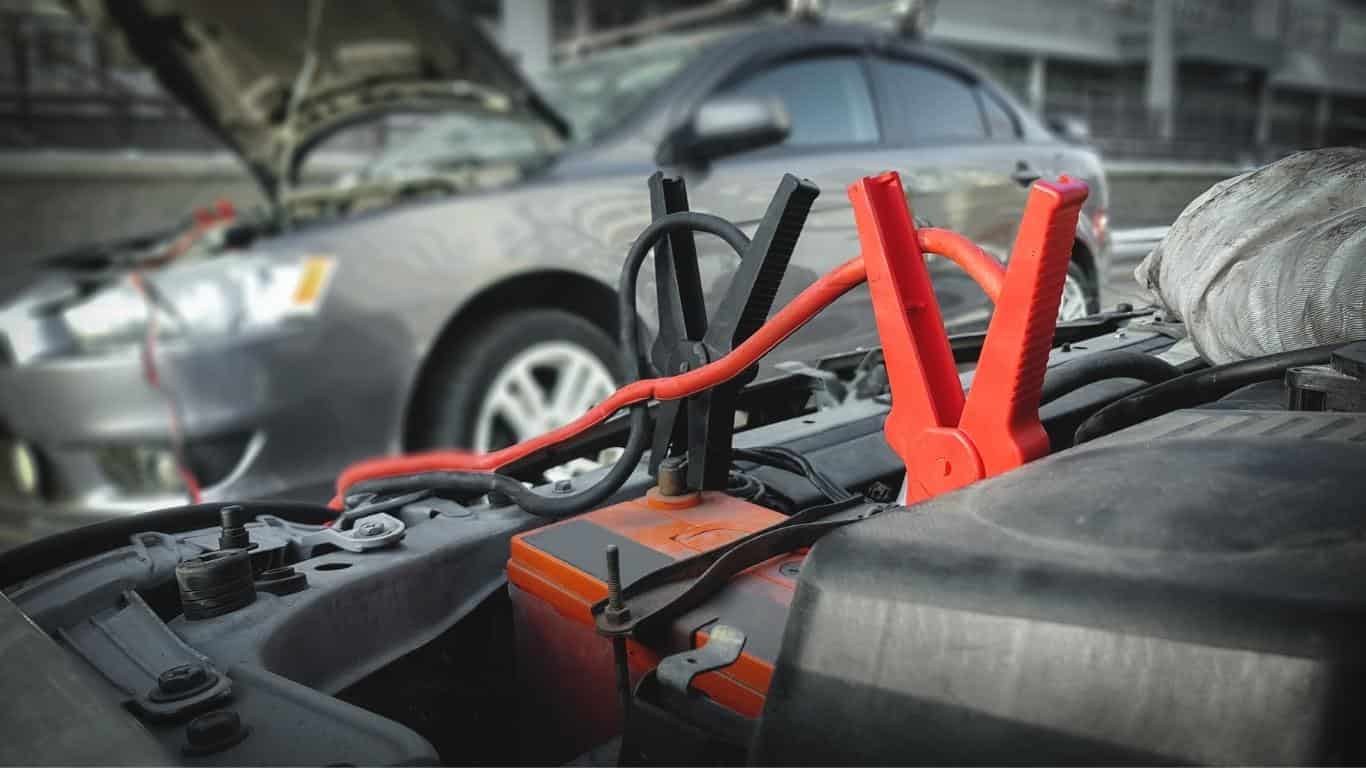
- Safeguard your clothes and your hands with protective clothing.
- Park the jumpstarting car next to the one with the dead battery so that the jumper cables reach both vehicles. This is where longer cables come in handy.
- Turn off the ignition on both cars and remove the keys. For vehicles with push-start buttons, turning off the ignition is enough.
- Open the hoods of both cars, using their respective latches to prop them while you work.
- Locate the batteries of both cars—usually conspicuously placed in the hood. But if you are uncertain about its position, consult the owner’s manual.
- Locate the battery terminals. You should look for a red terminal (indicating the positive side) and a black terminal (indicating the negative side).
- Take one end of your positive (red) cable and attach it to the positive (red) terminal of the car with the dead battery while ensuring no two terminals are in contact.
- Connect its other end to the positive terminal of the working battery, or have someone help you do it.
- Connect one end of the negative (black) cable to the working battery’s negative (black) terminal.
- Connect the other end to a ground metal on the vehicle with the dead battery. In other words, any unpainted grounded metal part.
- Turn on the ignition of the donor car.
- Start the car with the dead battery. If it fails to turn on, wait 2–3 mins and try again.
- Allow the car to run for up to 30 minutes to charge the battery before shutting it off.
- Disconnect the cables in the reverse order, i.e., ground negative cable on the dead car before negative cable on the donor car and positive cable on the donor battery before positive cable on the dead battery.
Tip
If the car does not start, check your connections, tighten or clean as needed, and wait for a short time to allow enough of a boost for the dead battery before trying again. If it still doesn’t start, contact your local service station for assistance, as there is likely another problem stopping your car from turning on.
How to Jump a Car Without Another Vehicle (Using a Portable Battery Pack)
If you’ve ever needed a battery jumpstart before, you know that getting a helper can be pretty difficult. So it’s a brilliant idea to have a portable battery pack (also known as a portable jumpstarter or emergency battery booster). This will spare you the need for a selfless stranger.
If you don’t already have one, here are some features you need to look out for when purchasing a portable battery pack:
- Radios
- Emergency lights
- 12-volt outlets
- Air compressors
- Inverters
- USB chargers
Most battery packs can function as a compact charging station for phones, laptops, and pretty much anything in need of a charge. You should therefore remember to charge it periodically as these devices will drain the battery power if used regularly.
Procedure
Here’s how to use a portable battery pack to jumpstart your car:
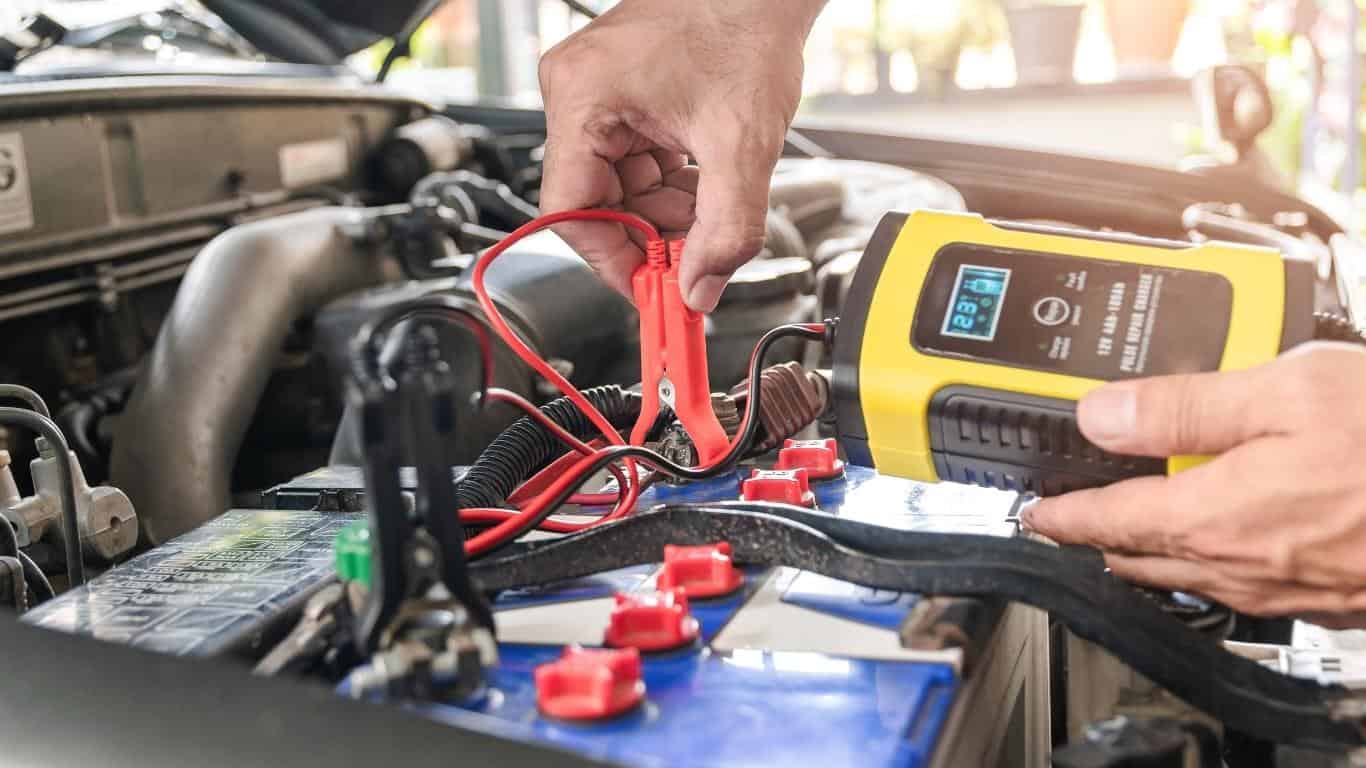
- Make sure your portable jumpstarter is fully charged.
- Wear protective clothing and eye protection.
- Turn off your car and remove the keys from the ignition.
- Keep the battery pack as far away from the battery as the cable length permits.
- Pinpoint the positive (red) and negative (black) terminals on your car battery and brush off any corrosion before attaching the jumper cables.
- Identify the positive and negative clamps/clips on your portable battery pack. The positive charger clamp is usually red, while the negative charger clamp is black, just like your battery. But always double-check.
- Ensure the battery pack is turned off.
- Connect the jumper cable’s red clamp to the battery’s positive terminal.
- Connect the black clamp to a clean, unpainted, and stationary metal part. Usually, an area away from the battery, carburetor, and fuel lines. This is the grounding point.
- Ensure the jumper cables are firmly in place, and turn on the portable battery pack. If you need to readjust the clamps, turn the car and battery pack off first.
- Turn on the car.
- Turn off the battery pack after the engine starts.
- Remove the negative (black) clamp first, followed by the positive (red) clamp.
- Store the battery pack in a cool, dry place and recharge it if necessary.
Note
If your car refuses to turn on after the first attempt, wait around 2-3 minutes to try again. Abstain from cranking your car engine for more than 5 seconds. If the car still does not respond after 3 or 4 attempts (with adequate waiting times between), you may need to purchase a new battery.

How Long Do You Jump a Dead Battery?
If the cables are connected correctly, jumpstarting your car should take only a few minutes and up to thirty minutes under extreme conditions. This includes driving the car (at least 15 minutes) after starting to recharge the battery fully.
How to Safely Remove Jump Leads
In what order do you remove jumper cables? Simple: in the opposite steps you took when connecting it. That is:
- Decouple the black (negative) jump lead connected to the vehicle with the weak battery.
- Disconnect the other end of the black (negative) jump lead connected to the donor battery.
- Remove the red (positive) jump lead connected to the donor battery.
- Uncouple the red (positive) jump lead on the dead battery.
After the Leads Have Been Removed
You’re probably wondering, “how long should I drive my car after jumping it?” You should leave your car running for 15–30 minutes after it comes on. For the best results, drive around during that period instead of letting the car sit idly. The speed of the alternator will cause the battery to charge faster. However, it’s better not to drive in traffic, as it defeats the whole purpose.
What If the Car Doesn’t Start After the Jumpstart?
If your connections are solid and you’ve waited an adequate amount of time, and the car still doesn’t start, it’s likely due to a different problem. Non-battery problems that might stop your car from starting include:
- A clogged fuel filter
- A faulty ignition switch
- An empty gas tank
- A neutral or clutch safety switch
On the other hand, if your car starts, but the battery always runs down, it might be at the end of its useful life and unable to hold a charge. Your alternator could also be faulty and unable to fully charge the battery even when driving.
Another common cause of quick battery drain is cold weather. So, consider adding a winter car battery to your supplies.
FAQs
How Long Does It Take To Jump a Dead Battery?
If attempting a jumpstart by yourself, you can expect the process to take about 10–15 minutes. But the actual charging time should only take about 2–3 mins. But it might take slightly less time If a professional jumpstarts your car.
When Jumping a Car, Which Cable Goes in First?
Always connect the red jumper cables first. Start by clamping one red cable to the positive side of the weak battery. Then attach the other red clamp to the positive side of the donor battery. Next, clamp one black cable to the negative side of the working battery. And the other black clamp should be connected to an unpainted ground metal in the vehicle with the weak battery.
What Happens if You Jump a Car Wrong?
Jumping your vehicle wrongly can cause severe damage to the electrical components of your car. And for modern cars with many computer systems, this could be very costly. Misconnecting the cables or touching the cable ends together can also ignite hydrogen gas from the battery, causing it to explode.
Do You Remove Jumper Cables While the Car Is Running?
You don’t need to put off the car before removing the jumper cables. In fact, you shouldn’t do so for the vehicle with the dead battery, as it needs to run for a reasonable period to recharge. So, leave the cars running and remove the cables, starting with the negative cable and ensuring they do not touch each other.
Can a Car Battery Be Too Dead to Jumpstart?
No. A battery can never be too dead to jump unless damaged or faulty. It’ll only hold less charge as it ages, requiring frequent jumpstarts.

